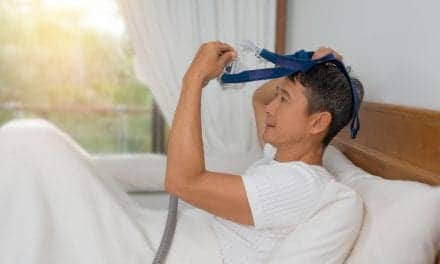Philips announced that risk assessments have been completed for CPAP and BiPAP sleep therapy devices under the June 2021 recall, and the company has provided a summary to the US Food and Drug Administration and other authorities for review.
This set of devices includes the first-generation DreamStation, System One, and DreamStation Go devices, representing approximately 95% of the registered devices globally, according to a release from Philips.
“Our first priority is the health and well-being of patients,” says Roy Jakobs, CEO of Royal Philips, in a release. “We have therefore focused on the comprehensive test and research program to gain more clarity about the safety of the affected devices and on providing replacement devices to patients. The third-party risk assessments for the sleep therapy devices presented today are positive and reassuring, and we are making good progress with the remediation of the affected devices. The relevant competent authorities globally, including the FDA, are still reviewing the test results and assessments.”
The update is part of the company’s program to assess potential health risks related to the polyester-based polyurethane sound abatement foam in sleep therapy and ventilator devices that were part of the earlier recall. The latest assessments build on the previous updates in December 2021, June 2022, and December 2022. Additionally, tests and analyses have been completed for first-generation DreamStation devices that have been exposed to ozone cleaning.
The test and research program has been conducted with five independent, certified testing laboratories, and the results have been reviewed and assessed by third-party qualified experts and Philips Respironics, as well as an external medical panel.
“We share the same objective to ensure patient safety and quality in the delivery of healthcare, and we remain committed to working closely with these agencies,” says Jakobs in the release. “The completion of testing and remediation of the affected devices remain our highest priorities.”
Results for Devices Not Exposed to Ozone Cleaning
The completed set of test results and analyses for the first-generation DreamStation, System One, and DreamStation Go sleep therapy devices indicate that potential patient exposure to foam particulate matter (PM) and volatile organic compounds (VOCs) from the PE-PUR foam within these devices is unlikely to result in an appreciable harm to health in patients.
According to Philips:
- The results indicate that the exposure to VOC emissions is unlikely to result in an appreciable harm to health in patients.
- The results indicate that exposure to PM emissions from degraded foam in these devices, including potential respirable and non-respirable particulates, is unlikely to result in an appreciable harm to health in patients.
- Prevalence of visible foam degradation in inspected used first-generation DreamStation devices was found to be low.
Impact of Ozone Cleaning on Foam Degradation in First-generation DreamStation Devices
Philips has completed testing on first-generation DreamStation devices that have been exposed to ozone cleaning and found:
- Exposure to VOC emissions from the assessed devices treated with ozone cleaning is unlikely to result in an appreciable harm to health in patients.
- Exposure to PM emissions from the assessed devices treated with ozone cleaning is unlikely to result in an appreciable harm to health in patients.
- Ozone cleaning exacerbates foam degradation, but ozone-induced degradation is unlikely to result in an appreciable harm to health in patients.
Philips is in the process of completing various remaining tests and analyses. The risk assessments for System One and DreamStation Go devices (that contain the same foam as the first-generation DreamStation devices) treated with ozone cleaning are being completed.
For the Trilogy 100/200 and OmniLab Advanced Plus ventilator devices, VOC and PM testing continues, as well as chemical evaluation and toxicological risk assessment. These devices contain a different type of PE-PUR foam than the first-generation DreamStation devices. Philips expects to provide an update on this in the third quarter.
Guidance for Healthcare Providers and Patients
Patients currently using an affected sleep therapy device that has not been remediated and not registered yet should register their devices to facilitate the remediation.
Philips continues to advise patients using affected sleep therapy devices that have not been remediated yet to contact their physician or care provider to decide on a suitable treatment for their condition, which may include stopping use of their device, continuing to use their affected device, using another similar device that is not part of the recall, or using alternative treatments for sleep apnea.
Moreover, patients are advised to follow Philips’ instructions and recommended cleaning and replacement guidelines for their sleep therapy device and accessories. Ozone and UV light cleaning products are not currently approved cleaning methods for sleep therapy devices or masks and should not be used.
Philips also continues to advise users of ventilator devices to contact their healthcare providers before making any changes to their therapy.
More details can be found here.



